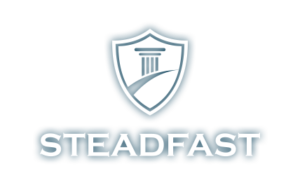If your company has a good loss history but your insurance rates keep increasing, it’s time to consider a casualty group captive. Steadfast Group Captive is a nationwide, heterogeneous group captive designed for midsize companies in a variety of industries.

What Are Casualty Group Captives?
Group captives are a type of captive insurance company, which is an alternative to conventional insurance.
In the conventional insurance market, companies purchase policies from insurance carriers. In exchange for premiums, the carrier handles claims and pays losses. The insurance carrier keeps any underwriting profit as well as investment income.
In the ARU captive model, a proprietary structure that minimizes volatility has been designed that provides coverage for multiple owners under a group captive approach. Companies can join an ARU group captive if they meet the eligibility requirements. The members retain ownership of the premiums and investment income and can receive dividends by keeping losses down.
The single-parent captive model is associated with very large corporations that have huge resources and can tolerate volatility in their loss costs, whereas group captives are well suited for midsize companies. By joining a group captive, members increase their market leverage and exercise greater control over services and costs.
ARU’s Steadfast Group Captive is a heterogeneous group captive for middle market companies. An insurance carrier with an A.M. Best rating of A+ (superior) fronts the coverage. Members enjoy significantly lower insurance costs compared to what they would receive in the conventional insurance market – as well as flexible coverage and a one-of-a kind program structure that protects members against volatility.
What Types of Coverage Are Available?
Steadfast Group Captive is a casualty captive providing the following:
Members can also access proprietary excess liability and umbrella programs. However, the captive does not cover high hazard excess and surplus lines risks nor provide errors and omissions (E&O) and professional liability coverage.
What Is a Heterogeneous Group Captive?
Group captives are either heterogeneous or homogeneous:
Steadfast Group Captive is a heterogeneous group captive that accepts members in manufacturing, construction, retail, service, and distribution. Steadfast Group Captive does not accept commercial trucking companies as members, however, ARU has two other group captives for commercial trucking.
Who Can Join the ARU Casualty Group Captive?
To be eligible for membership in Steadfast Group Captive, companies need to meet several requirements:
Why Should Businesses Consider an ARU Casualty Group Captive?
In the conventional insurance model, businesses have little control over their insurance. Many insurance underwriters consider class-based factors when determining rates. This means your company may face expensive insurance premiums simply because other businesses in your industry have experienced high losses.
When you join the Steadfast Group Captive, your own loss history – not the loss history of others – determines your costs.
If your company has a better-than-average loss history, you may be able to see significant savings by switching to the group captive model. On the other hand, if your company has a poor loss history, you will be ineligible for the Steadfast Group Captive and the captive model in general may be a poor option for you.
How Should Businesses Control Losses?
Risk management is a critical aspect of success in the captive model. When you switch to captive insurance, you are taking ownership of your own risks. If you can keep your losses down, you will see significant savings and even earn dividends.
Before your business can join Steadfast Group Captive, you will need to provide your loss history and show you have a good loss experience. Companies who are able to achieve this typically embrace a workplace culture of safety. If you do not currently have a good loss history, this is something to work on before you start thinking about joining a group captive.
As a member of Steadfast Group Captive, you’ll have access to custom loss control services and claims handling. You’ll also have access to financial reports to assess your loss drivers. With these tools, companies can take their risk management to the next level.
Steadfast Group Captive also caps losses – a feature that provides financial stability in the event of higher-than-expected losses.
When Is the Right Time to Join a Captive?
The captive insurance model has seen tremendous growth recently. One reason may be because more midsize businesses are realizing that, thanks to the group captive model, captive insurance is within reach. Another reason is that business leaders are increasingly frustrated with conventional insurance market cycles.
Conventional insurance goes through cycles of soft and hard markets. During soft markets, businesses can obtain the coverage they need with relative ease. During hard markets, prices increase and it becomes harder to secure robust coverage with adequate terms. Even businesses with good loss histories may struggle to secure insurance during hard cycles, especially when economic factors and other widespread trends outside of their control are affecting the market.
During hard markets, captive insurance becomes increasingly attractive. However, captive insurance is not a short-term solution to hard markets. Rather, it is a long-term solution that allows businesses to break free of market cycles.
The sooner you join an ARU captive, the sooner you’ll enjoy the benefits of stable premiums and prices based on your own loss experience. If you have a good loss history and meet all the eligibility requirements, there’s no reason to wait.
Are you interested in joining Steadfast Group Captive? Contact ARU to get started.
